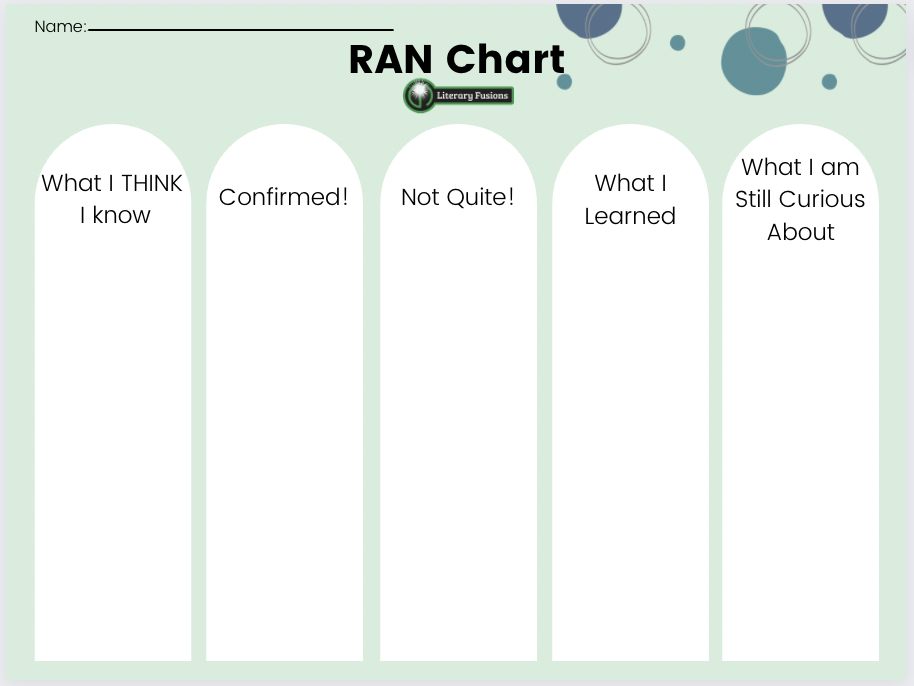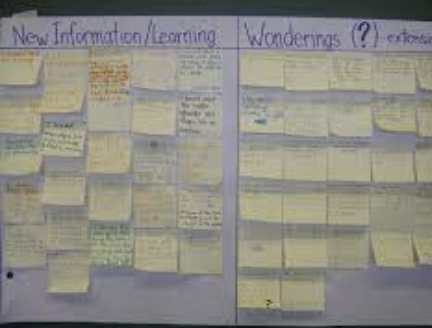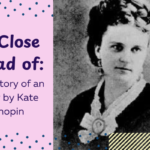What is a RAN chart?
For me, the RAN chart is the answer to “But the KWL chart doesn’t work in my class!” RAN stands for Reading and Analyzing Nonfiction (credit: Tony Stead). I have always struggled with the KWL chart for a few reasons. I like the concept, but when I asked the students what they know, they will (without fail) tell me ALL KINDS of stuff. Regardless of whether they are correct or incorrect, I was bound by “the powers that be” to write it on the chart … that hung on our wall … for me to stare out daily. When I asked the students what they wanted to learn, it was typically crickets. All the adorable faces were just staring at me. At first, I would get upset, but then I realized if you just threw a random topic at me that I had never considered exploring and I know very little about, I wouldn’t have a clue as to what I want to learn either. Perhaps sensing my frustration, a co-teacher lovingly introduced me to the RAN chart. Though I’ve seen many variations, a RAN chart typically has the following categories:
- What I THINK I know …
- Confirmed
- Misconception
- New Learning
- Wonderings
When teaching with a RAN chart, you’ll start the same as with a KWL, but the difference is that RAN charts specify what students THINK they know. That’s it in the beginning. Then you begin teaching the unit. As students learn throughout the unit, they can move what they thought they knew to either confirmed or misconceptions. Each day you can also ask students to add any new learning they had. In the end, students can document the questions they still have.
How to use one in the classroom?
I really feel like you can alter this to fit you! I have seen some teachers change confirmed to YES! and misconceptions to OOPS! And a few other variations of the wording. I have seen teachers create charts on butcher paper, have students fill out organizers (click here or on the image above to download ours!), use Jamboard, and, my personal favorite, use post-it notes.
I might like post-its a little too much, but here’s the thing: they make it easy to create a RAN chart really quickly. If you choose to go “old school”, you’ll just need one large chart or five smaller charts hung next to each other. Students are given post-it notes and they write down one thing they think they know and their name. They put their post-it on the first column. Simple as that. No prep, no fuss.
Then as they’re learning, the student can move THEIR post-it note to either confirmed or misconception. If a child is super-concerned about putting their post-it note on misconceptions I let them tweak their answer and put it on confirmed. In truth, I am not planning on crushing any kid with this activity, but I do highlight the excitement of learning from our misconceptions and how we all have them. That’s why it’s important to learn with an open mind! Most of my kids will celebrate learning from what they thought they knew. Then, each day, I have students write something learned on a post-it with their name (like an exit ticket) and put it on the chart under new learnings. Finally, everyone generates questions they still have at the end. It might not be Pinterest-perfect, but it’s simple, effective, and keeps the focus on student learning.




